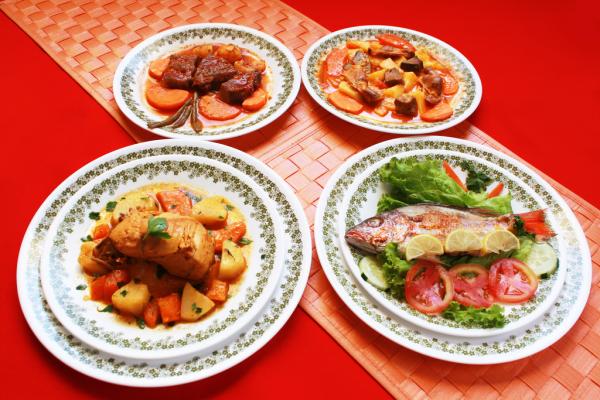What’s the best way to eat if you want to lose weight? By this I don’t mean any particular diet or fad. One school has promoted the idea that eating everything in moderation is the best route to svelteness, but another proposes choosing mostly foods that have a low energy content (think lettuce, not hot fudge). Does it make a difference? After all, following either prescription faithfully could reduce calorie consumption. Well, a recent study in the journal Appetite, says there is a difference.
Dr. Faris M.Zuraikat and colleagues from the Pennsylvania State University investigated the effect of training in portion control (a one-year training program) on food selections in trained VS untrained women. Three groups of women participated. The first group included 39 overweight or obese women who had undergone the 1-year training program. The second included 34 overweight or obese untrained women, and the third group consisted of 29 normal weight women who had not been trained in portion control.
It’s well-known, the authors said, that portion sizes can influence how much people choose to eat. What they wanted to discover was whether or not the training that the first group had would affect their chosen portion sizes or food selections when tested in a controlled situation. So, on 4 different occasions (once per week for 4 weeks), the women were given meals with 7 different foods, each of which simultaneously varied in portion size on the different testing days: from 100 to 175 percent of the baseline meal — which contained 808 calories. The different size portions were given randomly for each person.
What they found was that the weight of food consumed at a meal was significantly increased when the portions presented were increased — even for the women who had been trained in portion-control. However, when the researchers examined the energy density (ED) of the meals consumed (calories per gram of food), they found that the trained women chose meals that were lower in energy density than those chosen by the other groups, although total energy consumed did increase somewhat. This still resulted in the trained women consuming fewer calories per meal (506 calories) than either the untrained overweight/obese group or the untrained normal weight group (592 and 611 calories respectively).
So what was going on? The investigators found that although the weight of the food consumed increased similarly in all groups, the food selections differed. The women who had been trained in portion control selected foods of lower energy density, and thus consumed fewer calories.
They concluded
These findings provide further evidence that the portion served is a primary determinant of the amount consumed and indicate that even prolonged training in standard portion-control strategies, such as using scales and measuring tools, using pre-portioned foods, or instruction to eat less, may not be powerful enough to counteract the influence of cues from the amount of food available.
And also, they said their results
suggest that it may be easier or more sustainable to moderate energy intake by consuming healthy, low-ED foods than to try to resist eating large portions. Future interventions should encourage individuals to evaluate the types of foods available, rather than focusing only on the amount of food that is served.
In the end, they suggested that it’s important to provide information on the healthfulness of food choices, rather than to simply recommend decreasing portion sizes.




